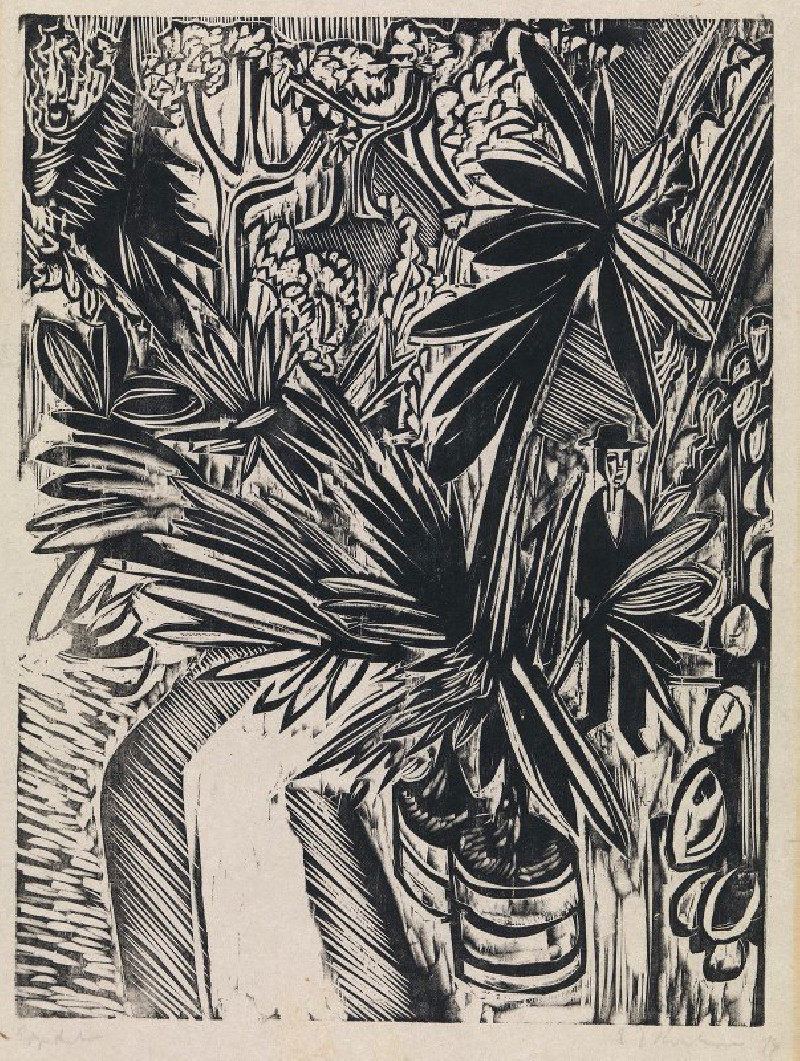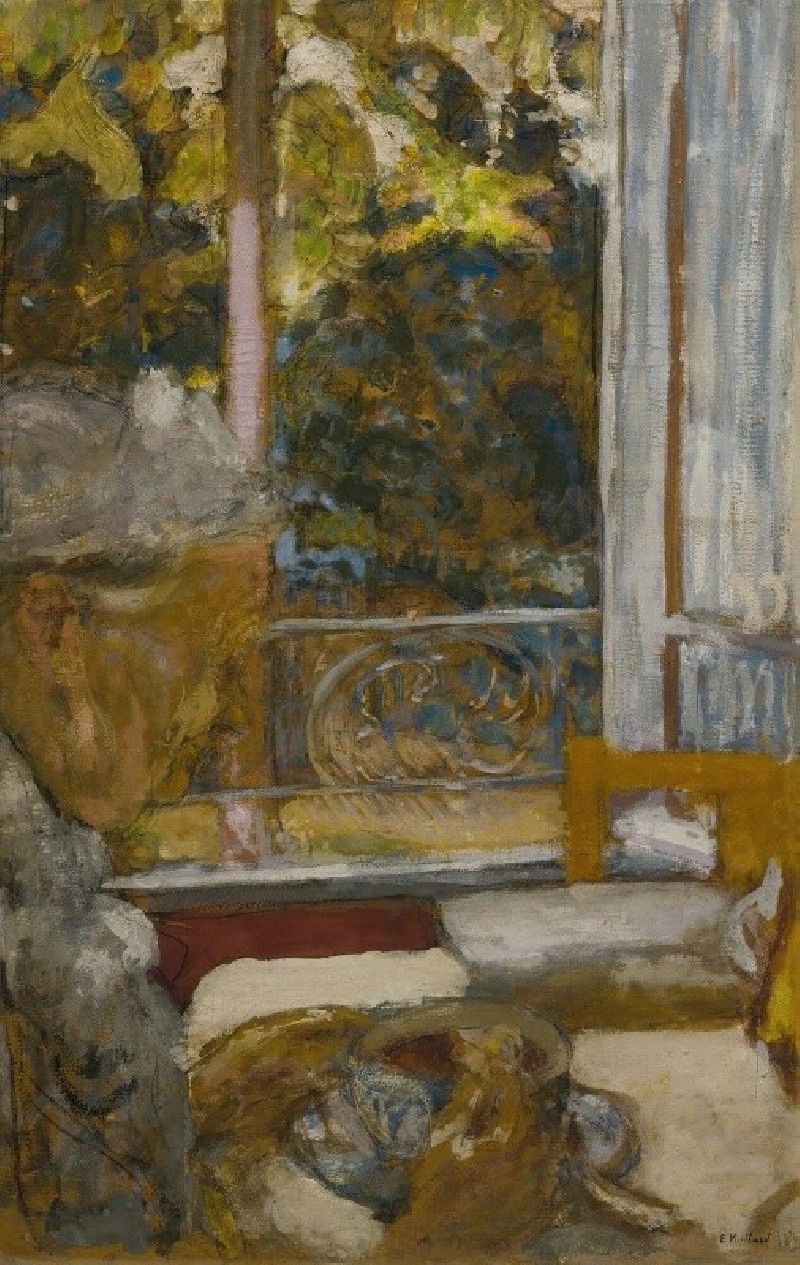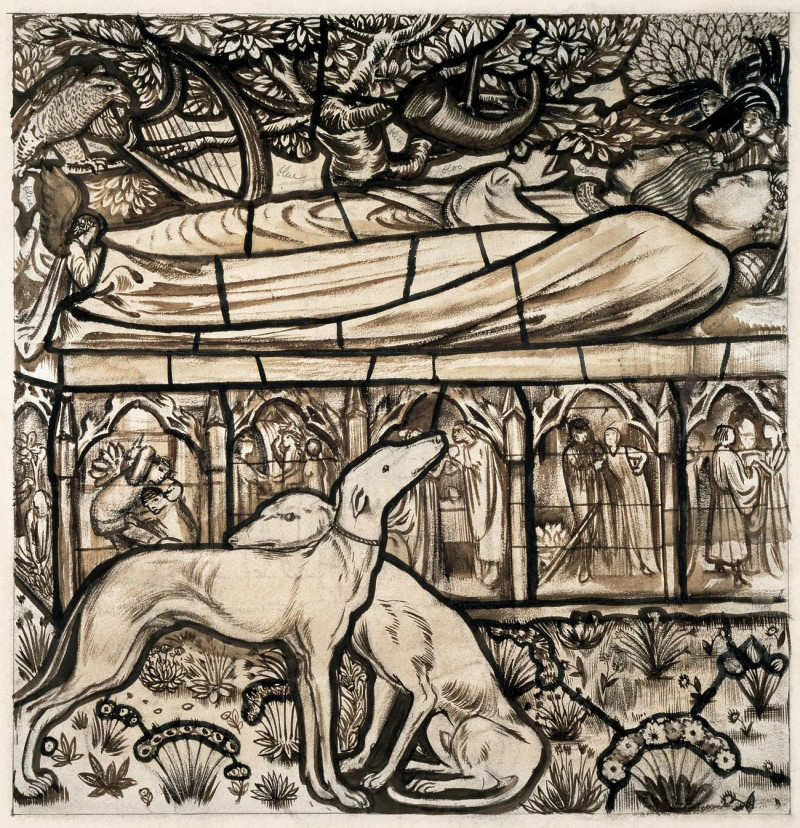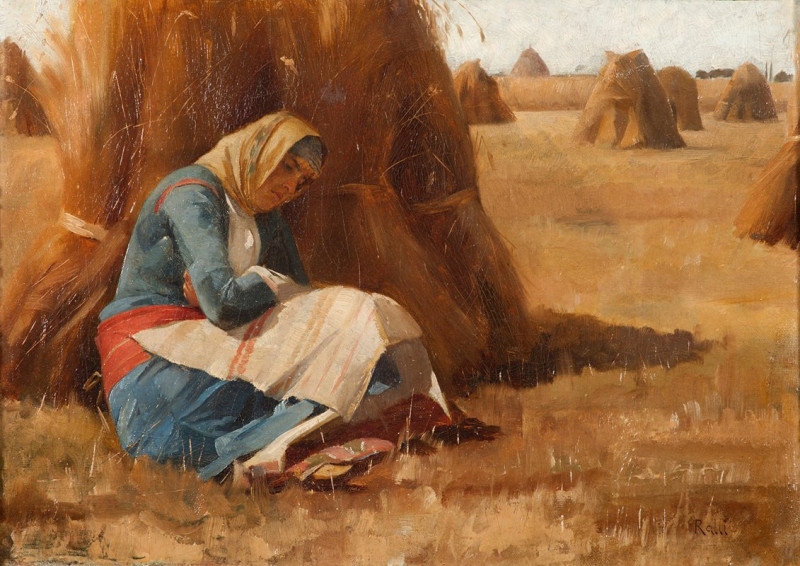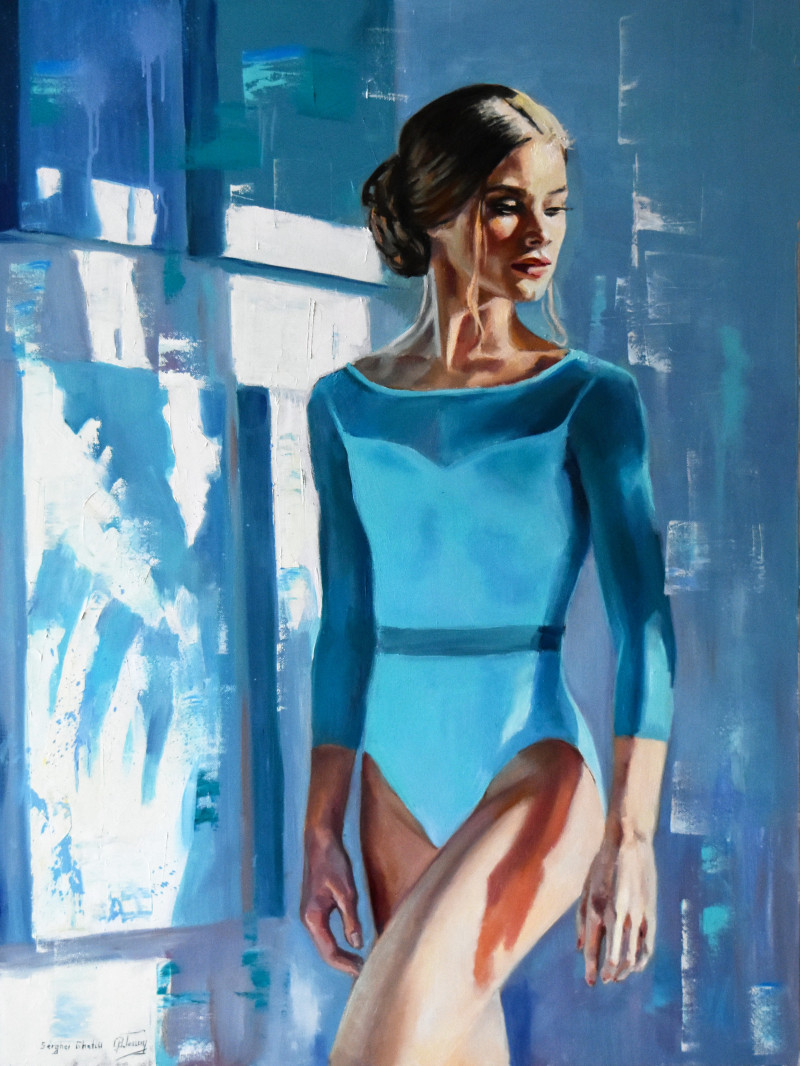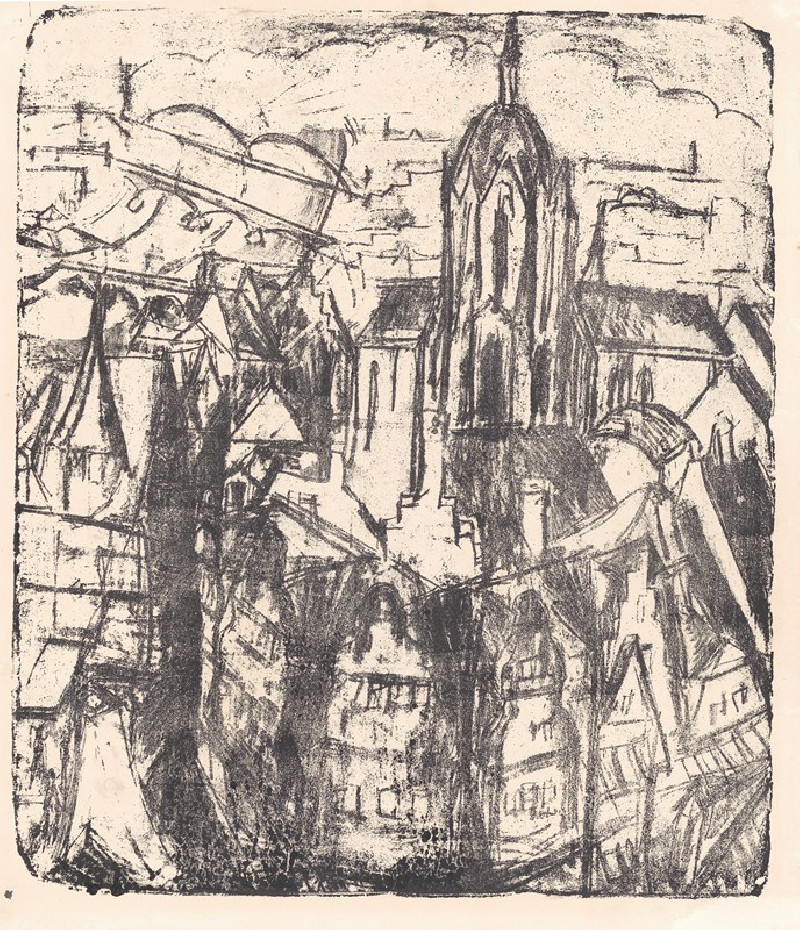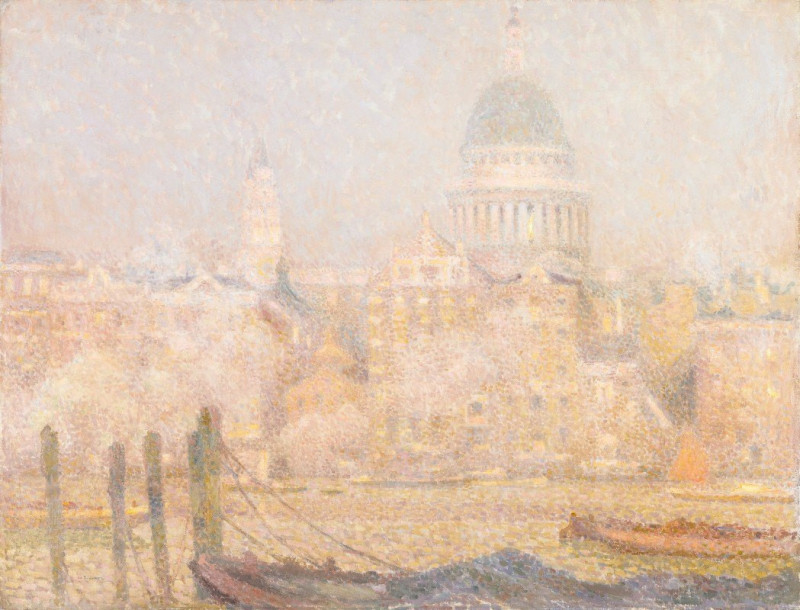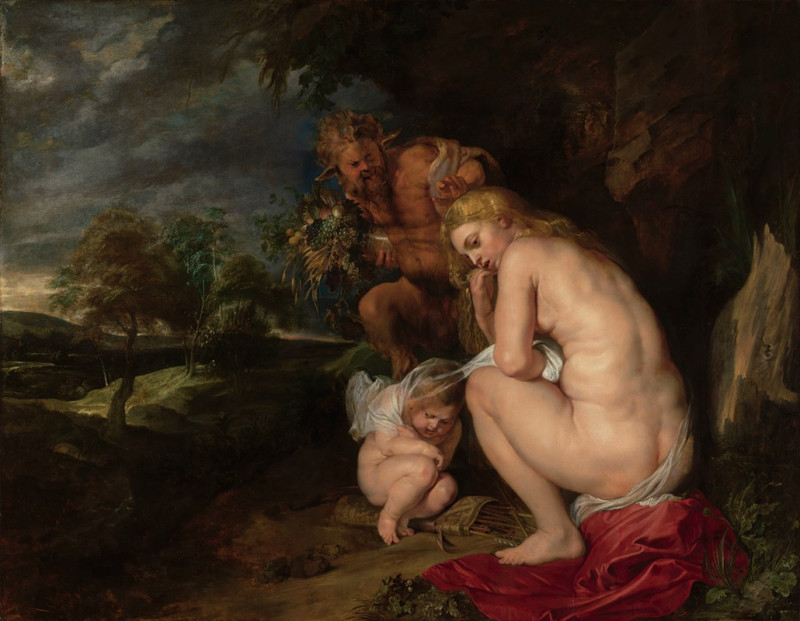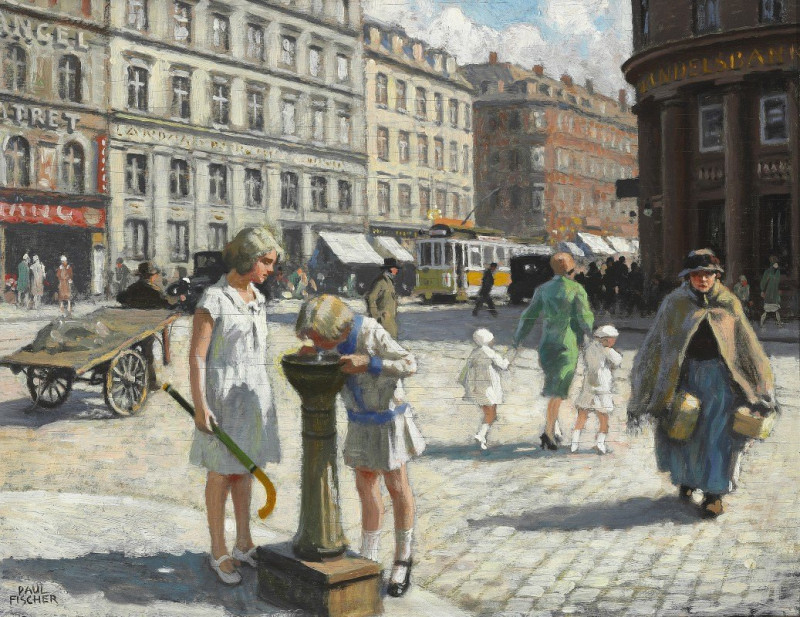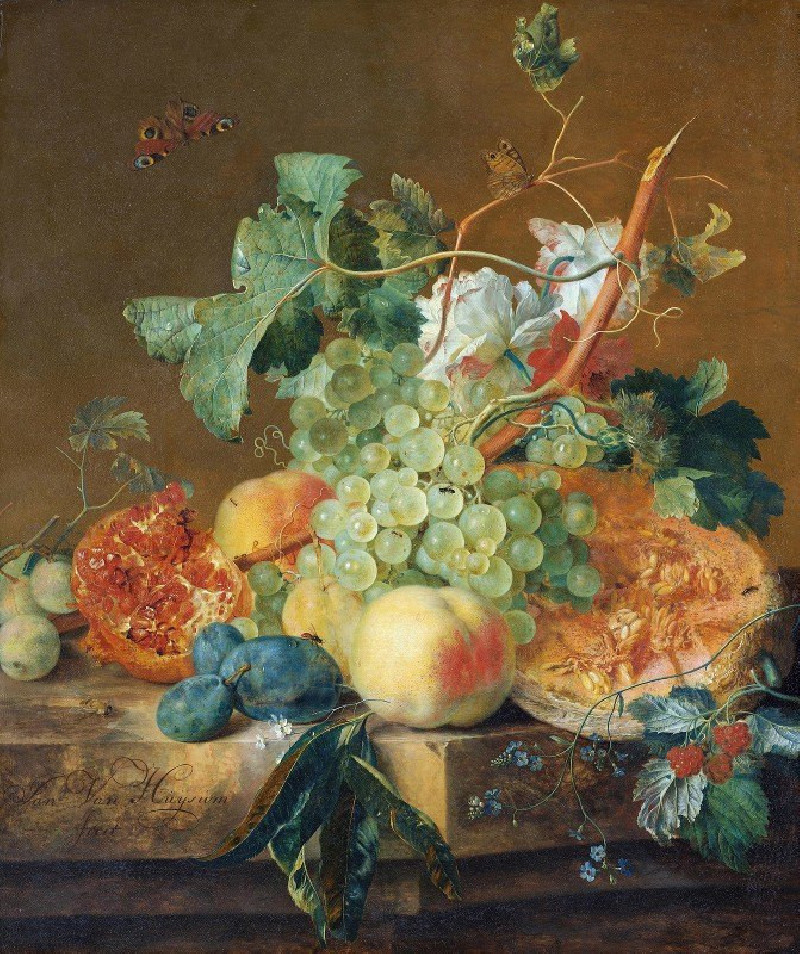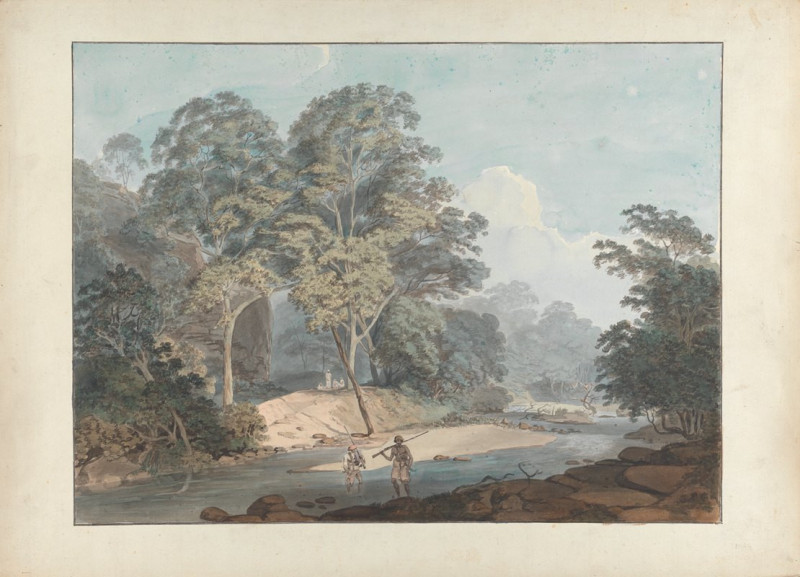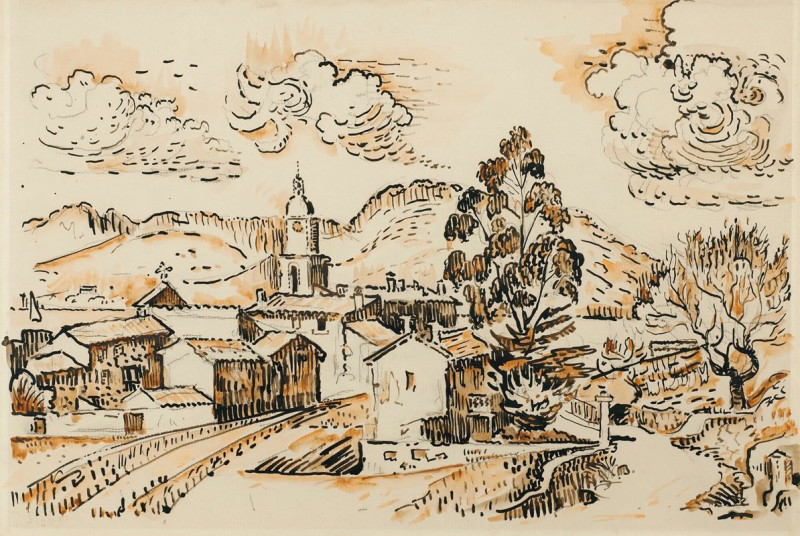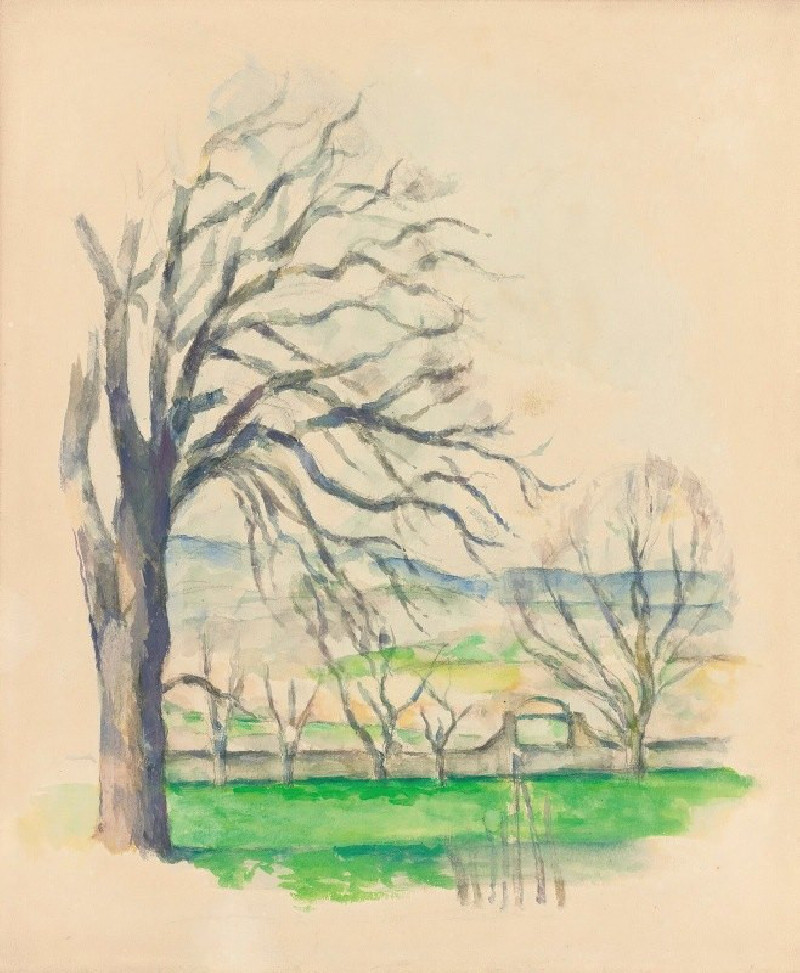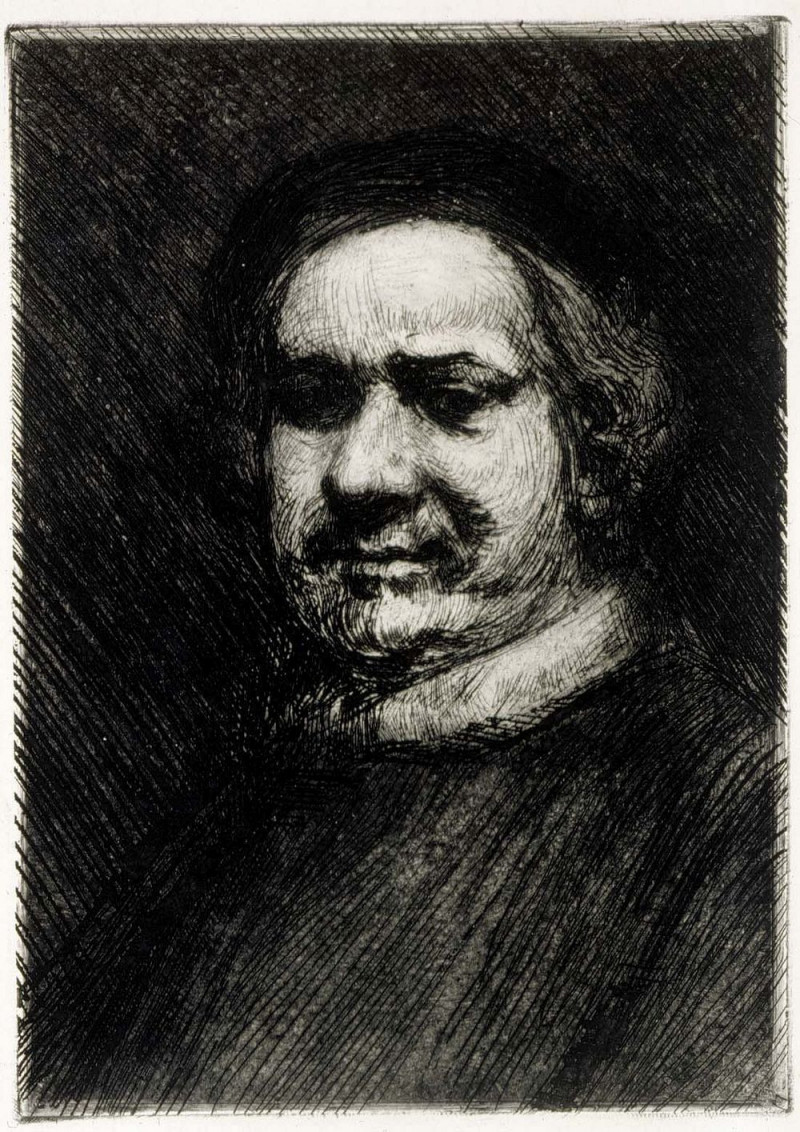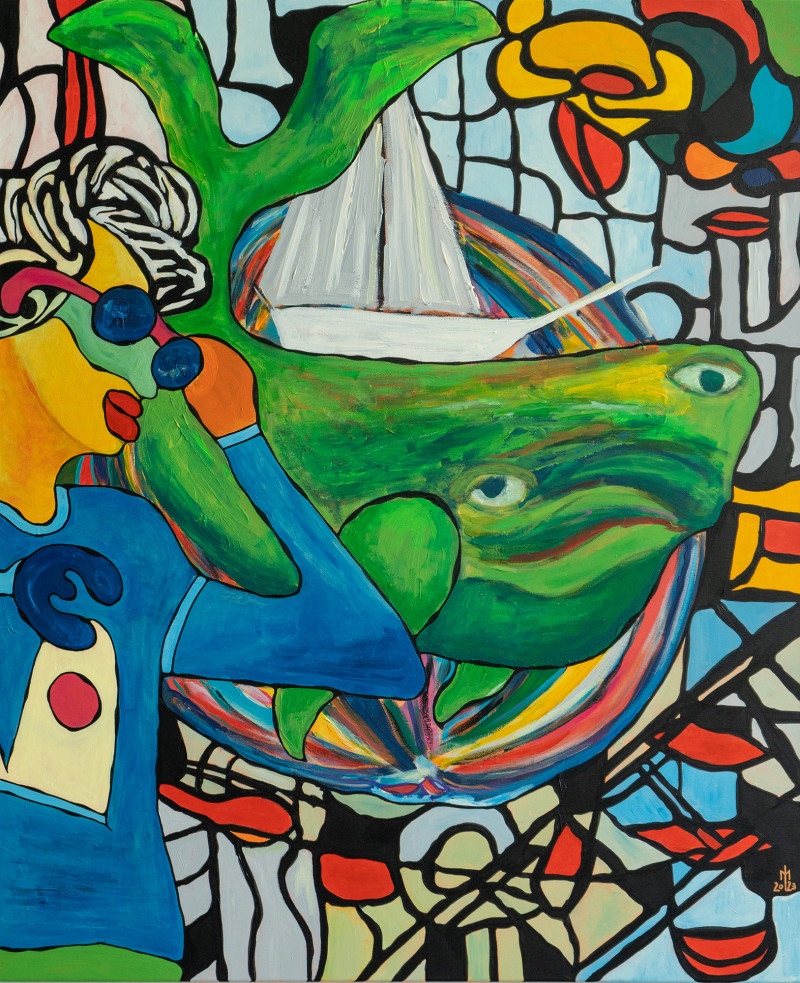Væksthus. Jena (1914)
Technique: Giclée quality print
Recommended by our customers
More about this artwork
Jena (1914) by Ernst Ludwig KirchnerErnst Ludwig Kirchner's "Væksthus. Jena" from 1914 offers viewers a captivating glimpse into a vivid and textured world rendered in the Expressionist style for which Kirchner is renowned. The woodcut, a method favored by Kirchner, showcases his characteristic bold, stark lines and dynamic compositions, enhancing the emotional intensity of the scene.The subject of this piece is a lush greenhouse filled with a dense composition of plants. Dominant in the foreground are various forms of exotic foliage, each depicted with deep, contrasting cuts that evoke the rich darkness and intricate details of an indoor garden. Through Kirchner’s expressive lines, the leaves and stems whirl energetically around each other, creating a tangled yet harmonious jungle.Adding an intriguing element to the composition, a figure is subtly integrated into the bottom right corner of the piece. This human presence, peering out from the botanical chaos, suggests a narrative of human interaction with nature, underscoring themes of growth, vitality, and perhaps the mystery of hidden spaces."Væksthus. Jena" serves as a stunning example of Kirchner's ability to blend human elements with natural settings in an almost dream-like depiction, inviting viewers to explore the depths of natural beauty through the lens of German Expressionism.
Delivery
Returns
Ernst Ludwig Kirchner (1880–1938) was one of the most important German Expressionist painters. He was a co-founder of Die Brücke, a group of German expressionist artists formed in Dresden in 1905. Die Brücke and Kirchner took inspiration from Vincent Van Gogh and Edvard Munch, as well as African and Oceanic art. They used woodblock printing as a medium to showcase their signature style: flat, unrealistic images with vivid colors. The recurring themes in Kirchner's artworks included exotic cultures, faraway landscapes, self-portraits, dancers and Berlin street life. His paintings and prints effectively portrayed non-European cultures despite the fact that he never traveled outside of Europe.

